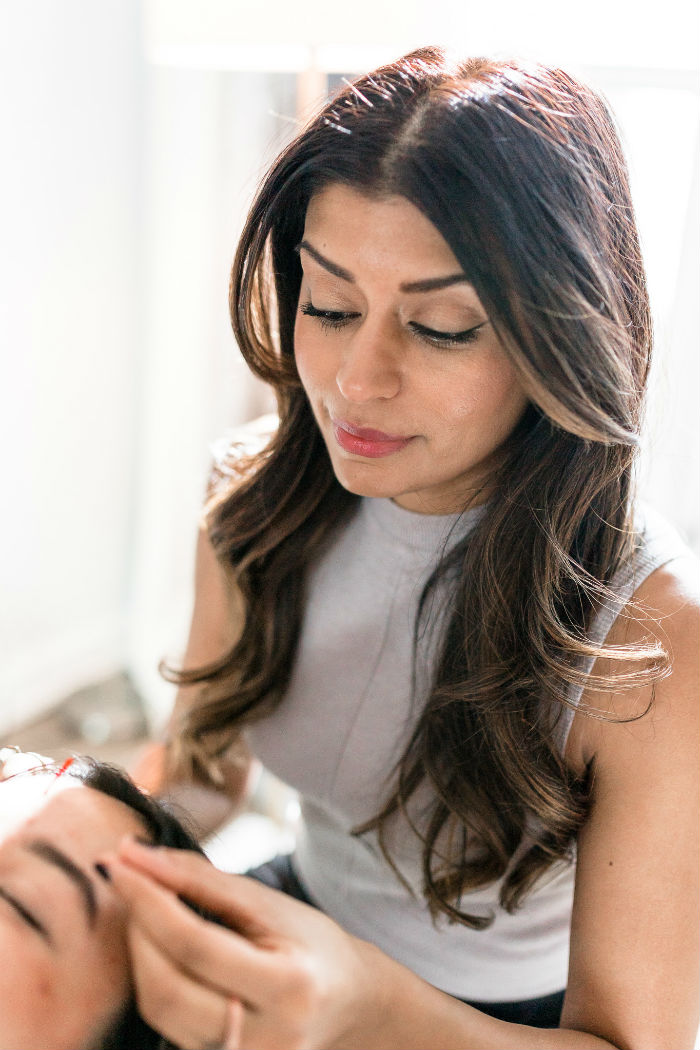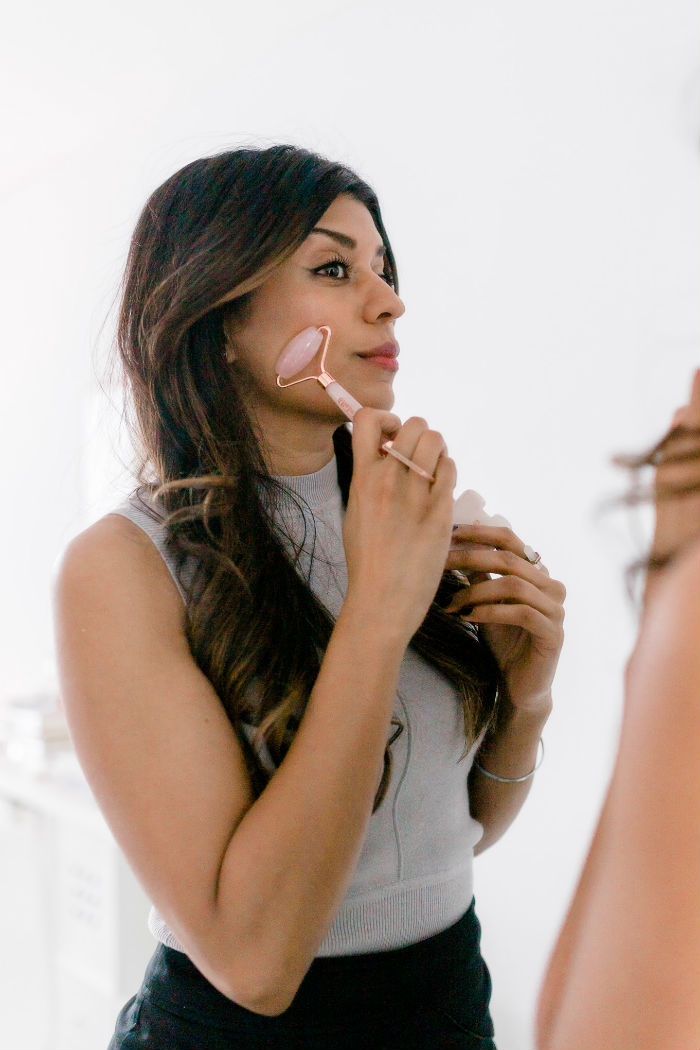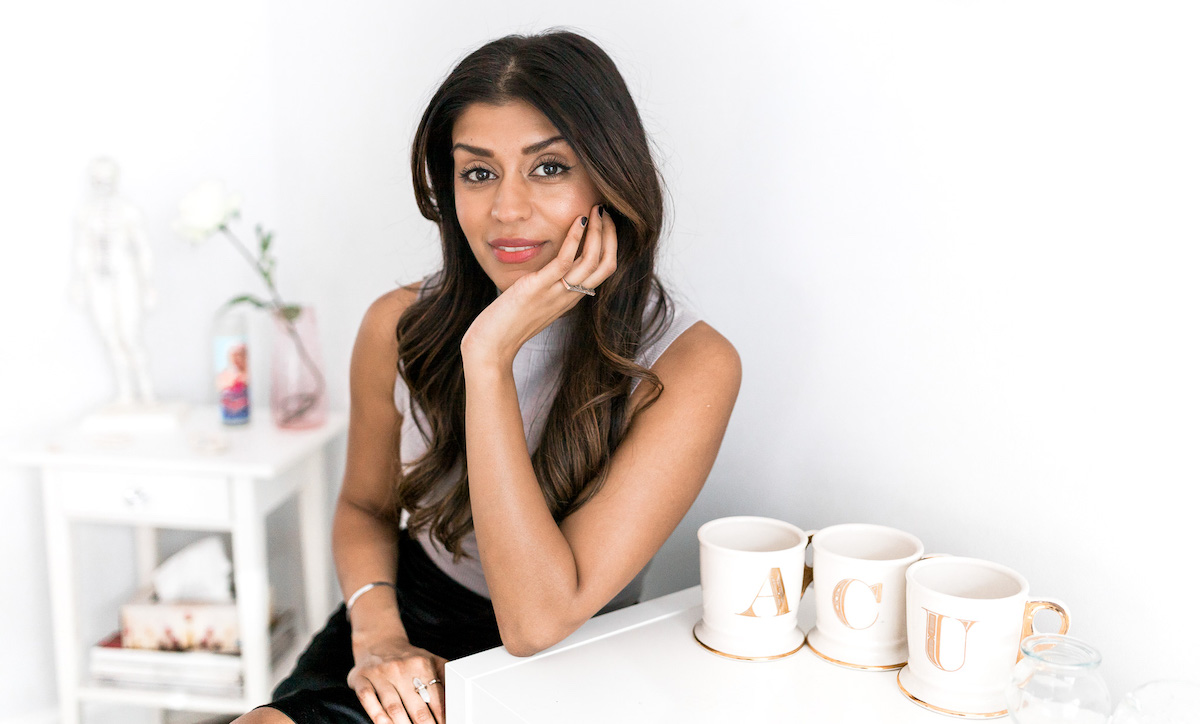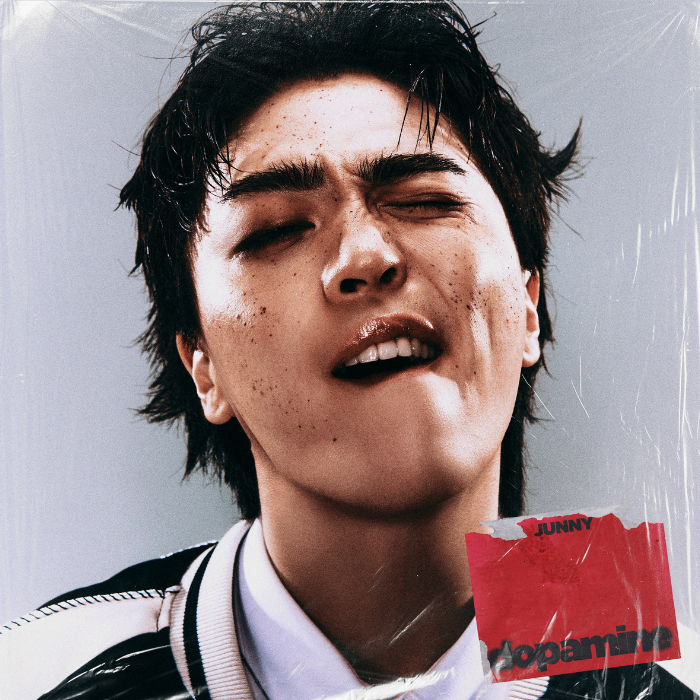As the only brown girl in a school of white kids growing up, Amrit Singh never thought she was pretty. Now, the Toronto-based registered acupuncturist and founder of 6BabeBeauty is determined to make every woman feel like her best and most beautiful self, inside and out, through acupuncture treatments.
“[Back then], I wasn’t proud that I was different…I was trying to be as normal — normal being white — as possible,” she says. “Now, I’m proud and I feel happy that I’m a woman of colour in this life and I get to do acupuncture.”
But acupuncture wasn’t Singh’s initial life plan — after obtaining a Bachelor of Arts in business administration at the University of Winnipeg, she went on to work in the business side of the music industry. During that time, she experienced a bad fall while slipping on ice in Winnipeg, which resulted in chronic back pain. In an attempt to relieve the pain, she tried chiropractic care, physiotherapy and massage therapy, but nothing worked.
“I just thought, ‘Cool, I’m going to live with this for the rest of my life,” she recalls.
It wasn’t until she came across an acupuncture clinic in Toronto that everything changed.

“When the treatment was finished, I got up and was like, ‘Whoa,’ and I started to cry. [The acupuncturist] explained to me sometimes you can have physical pain, but sometimes there’s also emotional pain, too. So, I went home, couldn’t stop crying and I decided that night I’m quitting my job. I didn’t know I was going to do acupuncture, but I knew I was quitting.”
Amrit says her body went through a detox over the next couple days and it was then she realized how amazing acupuncture was. She began to research more into acupuncture and became fascinated with the treatment.
“I couldn’t stop [reading about it.] And that was it. I was sold.”
Since then, Amrit has made a name for herself, particularly in the Toronto area, as the go-to acupuncturist for health and cosmetic goals. After completing a Diploma of Acupuncture at the Institute of Traditional Medicine in Toronto, she went on to work in the city’s financial district where she quickly became known as “The Bay St. Acupuncturist.”
Two years ago, she launched 6BabeBeauty, her cosmetic acupuncture venture, which has since grown to include an e-commerce shop featuring Singh’s favourite natural beauty products, as well as her own 6BabeBeauty-branded facial rollers, Gua Sha and a face oil created by Amrit.
“Making 6BabeBeauty was like the fun side of acupuncture for me,” she says. “My destiny here is to make acupuncture cool, make it popular, and make it accessible. That is why I’m here.”
Below, Amrit talks to The RepresentASIAN Project about the challenges of growing up in a predominately white city, the importance of respecting cultural traditions, especially in acupuncture, and how she learned to love and embrace her Indian culture.

On her experiences growing up in a predominately white city
Growing up was very challenging. Initially when my parents moved from India, we grew up in downtown Winnipeg which is pretty multicultural and has a high First Nations population. There were a lot of different people. But then, when we moved to the suburb for a “better life,” in grade three, things changed. Everyone was white. There were two big shocks — one, the school system was poor. And then, nobody looked like me, nobody understood what was going on and it felt very awkward because I was [advanced academically] by far. I felt different, I felt bored, and I also felt like I couldn’t relate to any of them.
“I wasn’t proud that I was different… back then… I was trying to be as normal — normal being white — as possible.”
My parents were strict, so I struggled with freedom — not being able to go out as much and not being able to go out as late, especially when junior high and high school kicked around. I was worried about having friends come over and seeing religious artifacts and pictures, and our food, and I was embarrassed. It was a lot of feeling ashamed, feeling you weren’t good enough. You were constantly on eggshells about what you wanted to expose about your home life.
On finally embracing her Indian culture
I finally felt appreciated, valued and that it was OK to be Indian in grade 10, when I went to Maple Collegiate and saw more people of colour. There were Jamaicans, and Trini kids and Filipino kids and Asian kids and then some Indian kids and there were white kids, of course, too. I was VERY happy — my life changed. I felt so at home, I felt like I found my people. It was such a godsend to feel like I belonged somewhere, finally, instead of having to feel so hidden. There was always something you were hiding, I hated that feeling so much.
Moving to Toronto was when I felt like I was proud to be brown. I remember reading that Toronto was the first city in the world where minority rules, and it gave me this surge of power underneath and I was like, “I’m going for this.”
The odd thing about [being second-generation Canadian] is it’s a hard life, but then there’s so many great things about it. My parents taught me the importance of working hard, education, not looking down on people, treating everybody with respect, because we came from the bottom. Those are the values that I appreciate.
“It was such a godsend to feel like I belonged somewhere, finally, instead of having to feel so hidden.”
On being a woman of colour health practitioner and entrepreneur and the importance of respecting cultural traditions
[When it came to being brown], socially and personally, it was horrible, but workwise, being a [WOC] really benefitted me. In acupuncture and probably health care in general, at least for alternative services, I think it’s better to be a woman. I think people feel more comfortable being taken care of by a woman, plus your patient population will always be more female-based.
I’m proud and I feel happy that I’m a woman of colour in this life and I get to do acupuncture. There will be some argument in the history books, but acupuncture came from Ayurvedic medicine, which is from India, and then travelled to the way we know acupuncture being practiced today coming from China.


I am still very conscientious about what I say when talking about Gua Sha or using words from those languages because I’m not of Eastern Asian descent. Because I am a person of colour, I’m very conscientious about it and I see how people are not conscientious about it and it really bothers me. For example, “golden milk lattes.” I’m sorry, we’ve been doing that in India for 5,000 years! You didn’t invent anything new.
And it happens in beauty the most. It’s cool if you’re an esthetician and you want to do Gua Sha, but I don’t think it’s cool if you’re an esthetician, you want to do Gua Sha and then you name it as something else. This isn’t a face sculpting tool. Gua Sha can be a face sculpting tool but this is not a face sculpting tool that you invented and it’s not a technique you invented either.
“I’m proud and I feel happy that I’m a woman of colour in this life and I get to do acupuncture.”
I feel it’s an appropriation of the medicine. It’s the same thing as chiros and physios doing acupuncture and not studying the Chinese medicine behind it because they literally just stripped it to its bare bones: needle, muscle, the end. And they don’t care about anything else. That really breaks my heart. I really don’t like when people take acupuncture out of its whole medicine.
[At the chiropractic clinic I work at], the owners understand the difference between their acupuncture and my acupuncture. So, they do recognize the different style and they don’t undersell what I’m doing or say it’s the same as what they’re doing. I wouldn’t be able to work with somebody who thought that what we did was the same. It would burn me up inside.
On Asian representation in media, then and now
Growing up, Paula Abdul was huge for me. When I found out that she was mixed, I was like “Oh, she’s half brown? And she’s so pretty, and she’s famous and people love her and she dances and she makes good music and she’s cool!” So she was a big deal for me. Other than that, because I didn’t like Bollywood (I found the musical aspect of it very confusing, the storylines all the same, and I didn’t connect to it) there wasn’t anyone I could look up to.
But now, there’s Lily Singh, Priyanka Chopra, Deepika Padukone… we still have work to do, but I was watching TV the other day and there was a Punjabi Sikh guy in a commercial sitting in the background. Those are casted roles now. It’s totally different now. Lily Singh was in Times Square! I remember when her book came out and [an image of it] was wrapped around a Toronto streetcar and I was like, “WHAT?” And not only that, she still kept the same last name. I saw my name and Indian girl with big eyes and long hair… she didn’t try to make herself look white. She was just herself. It makes me happy because I just remember feeling like I could only look at white people’s success… there was no one else’s success for me to look at.
I definitely think that the world is changing and I think that people like Lily Singh and Priyanka Chopra are making people realize that there are Indian people out there and a LOT of us. So hey, let’s put them in our commercials. I just think that’s so important. I think the media, of course, it plays a big role.
Where we are now, in being brown Indian women, I feel like we’ve come so far out of that idea of “Indian girls are modest and shouldn’t be showing skin.” I see people like Sangita Patel and she’s just like bikini with her kids, abs out, fitness videos and nobody cares. People are happy for her, and no one’s hating on her. I just feel like where we are today to finally stand on our own two feet own our sexuality own the way we look, be proud of our differences and we don’t have to fit the mould anymore. And that’s such a big deal.
This interview has been edited for length and clarity.











